Cranky Hips? Try This Hip Mobility Circuit for Your Next Warmup
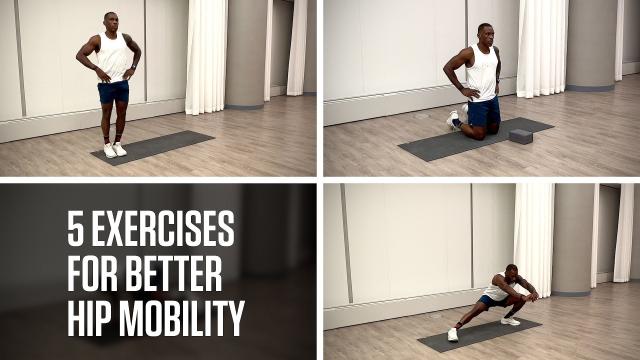
The first thing you need to know about hip mobility? It’s not the same as flexibility.
“Flexibility refers to a muscle’s ability to passively stretch to its end range,” Yusuf Jeffers, NASM-certified personal trainer and USATF-certified running coach, tells Runner’s World. “Mobility refers to movement at a joint. While flexibility can affect mobility, the terms aren’t the same,” he says.
The point of hip mobility exercises isn’t to get you into side splits or the deepest expression of pigeon pose. It’s to improve your hips’ range of motion so that you can ride efficiently and avoid aches and injuries.
The Benefits of Hip Mobility Exercises for Cyclists
While the hips deserve attention from everyone, cyclists in particular would benefit from giving this area of the body a little extra love. “Poor hip mobility can lead to issues and pain in the back and knees, usually stemming from muscular imbalances and inefficient motor patterns,” Jeffers says. Essentially, if your hip can’t move through its full range of motion, your body will compensate in other areas, potentially hijacking your form. And then it’s only a matter of time before you’re dealing with an injury.
There’s also the matter of performance: It’s tough to ride faster or longer when you’re working against inefficiency. Considering how much of a cyclist's power is generated in the hips, it stands to reason that hip mobility should be of particular interest to work on,” Jeffers says.
Ready to get started? Selected by Jeffers, the following hip mobility exercises can be performed as a circuit on designated rest or mobility days or incorporated into your preride warmup. Each of the five drills will get the hip moving in different directions, and both the quadruped and tall kneeling hip controlled articular rotation (CARs) will take your hip joints through their full range of motion. “Stay focused on the movement exclusively at the hip joint while minimizing compensatory movement at other joints, like the knees or the back,” Jeffers says. That means moving slowly and with control is key.
How to use this list: Perform 8 to 10 controlled reps per side of each exercise, focusing on the quality of the movement, not quantity or speed. Each move is demonstrated by Jeffers in the video above so you can master the proper form. You will need an exercise mat and a yoga block.
1. 90-90 Seated Hip Rotation
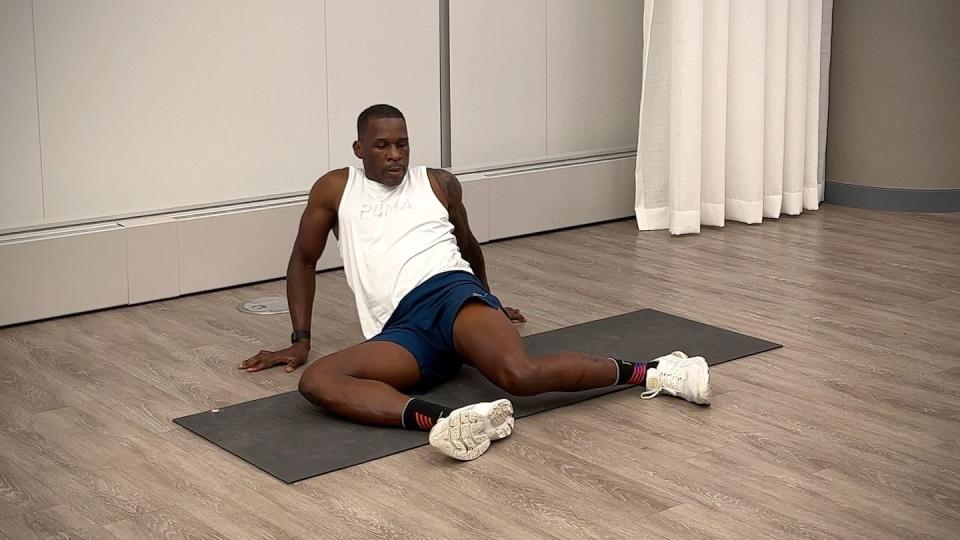
Start seated. Knees bent 90 degrees and feet planted. Lean back slightly and place hands behind you. From here, rotate knees to the right, placing them on the floor, so left shin is on the ground in front of you, and right shin in on the ground to your right side. Both knees should be bent 90-degrees. This is your 90-90 position. Without moving upper body, lift knees and take them through center, all the way to the left side of body into the opposite 90-90 position. Continue alternating sides, pausing in each 90-90 position.
2. Quadruped Hip CARs
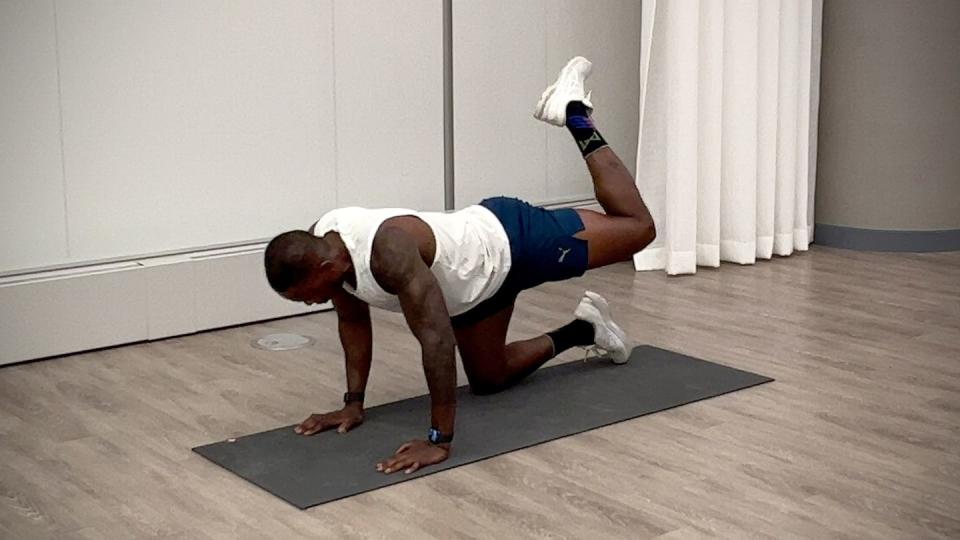
Start on all fours, knees under hips, shoulders over wrists. Keep belly button drawn in toward spine, back flat. This is your starting position. Lift left leg out to the left side, keeping knee bent 90 degrees and stopping at hip height. Then, lift left leg back and up like you’re doing a donkey kick. Circle left hip inward to come back to starting position. Then reverse this motion, hitting the donkey kick first, then lifting knee out to the side, and returning to starting position. This is one rep. Complete all reps on one side. Then switch sides.
3. Tall Kneeling Hip CARs
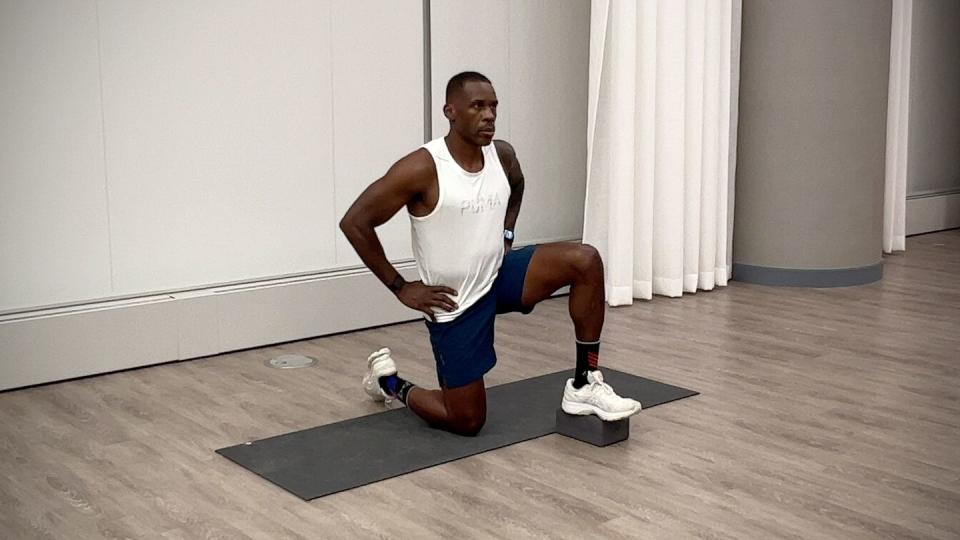
Start in a tall kneeling position. Place a yoga block on the lowest setting about a foot in front of right knee. Keeping knee bent, lift right leg out to the side, then bring it forward and place right foot on block. Pause, then lift right foot off block, bring right leg to the side, and return to tall kneeling position. Complete all reps on one side. Then switch sides.
4. Cossack Squat
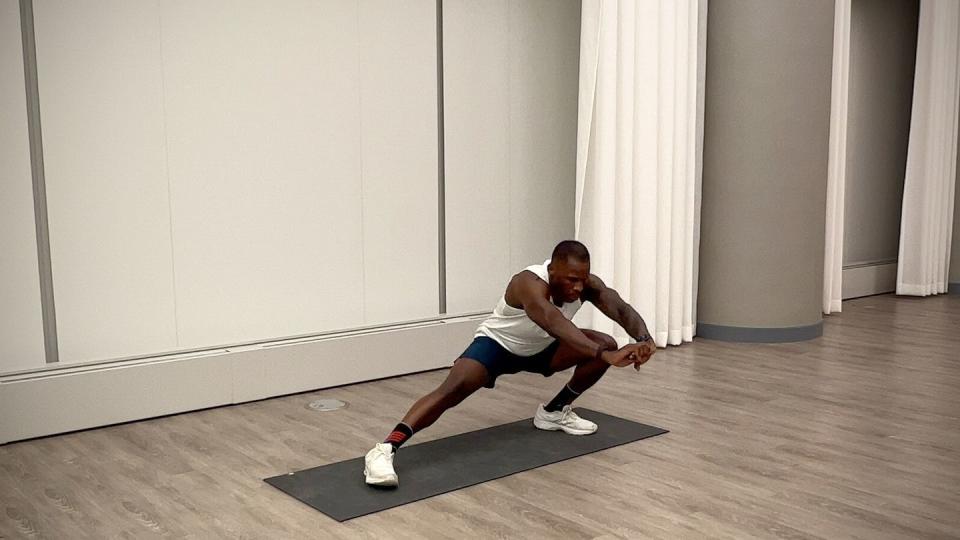
Start standing with feet wide, toes pointed slightly out and hands held in front of you. Send hips back and bend right knee, shifting weight to right foot. Keep left leg straight and foot planted. Press through right foot to stand back up. Repeat. Do all reps. Then switch sides.
5. Over-Under Hurdle Walk
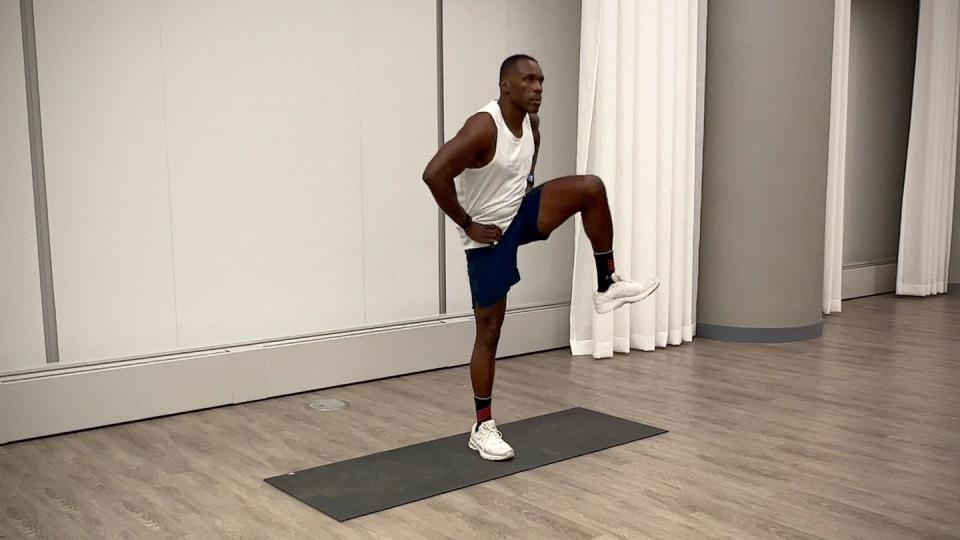
Start standing with feet hip-width apart, hands on hips. Moving toward the right, drive right knee up and over an imaginary hurdle, then drive left knee up and over the same imaginary hurdle. (You should step to the right.) Next, take a big step to the right, squatting to crouch under an imaginary hurdle, following the step with left foot so you stand tall on the opposite end of the mat. Repeat the sequence (going over and under an imaginary hurdle) moving toward the left. Do an equal number of reps on both sides.
You Might Also Like